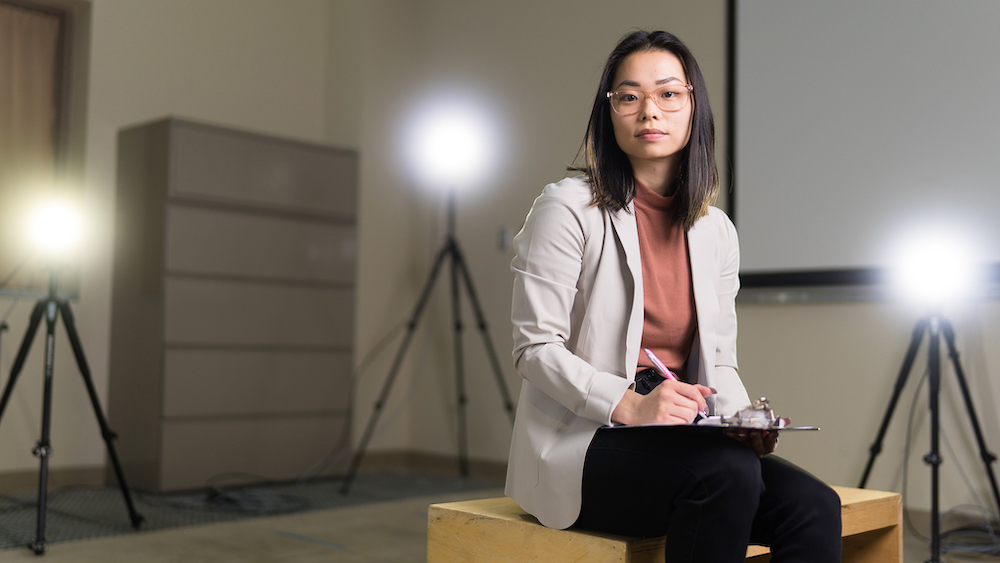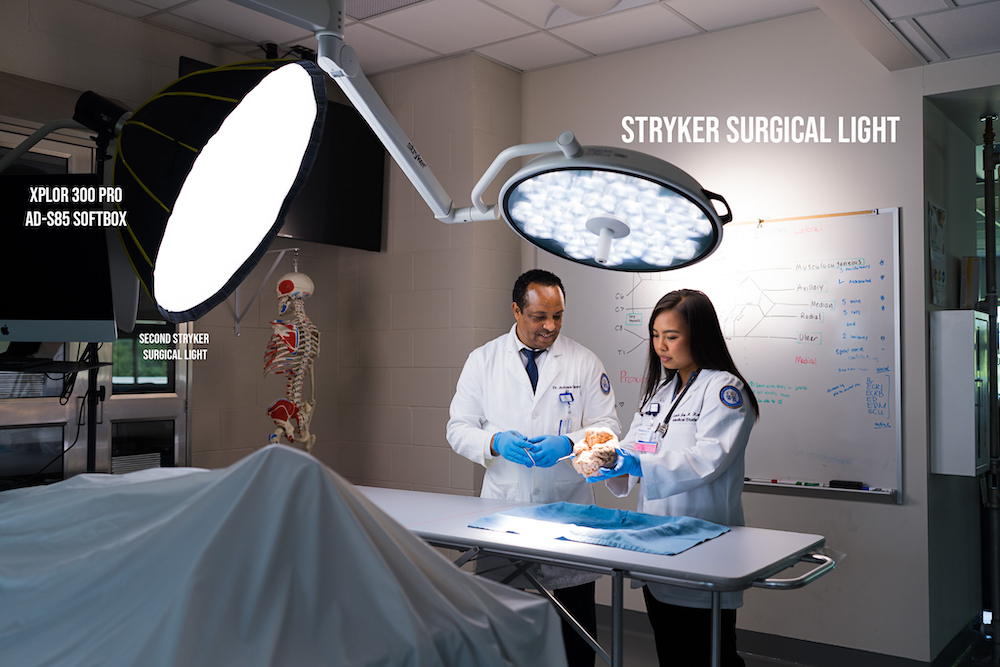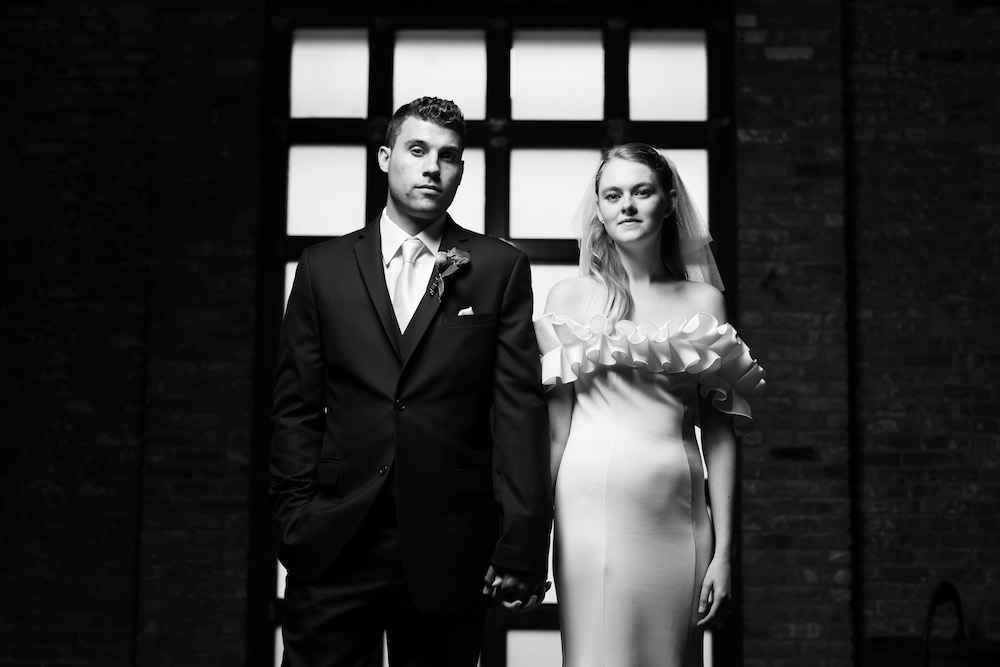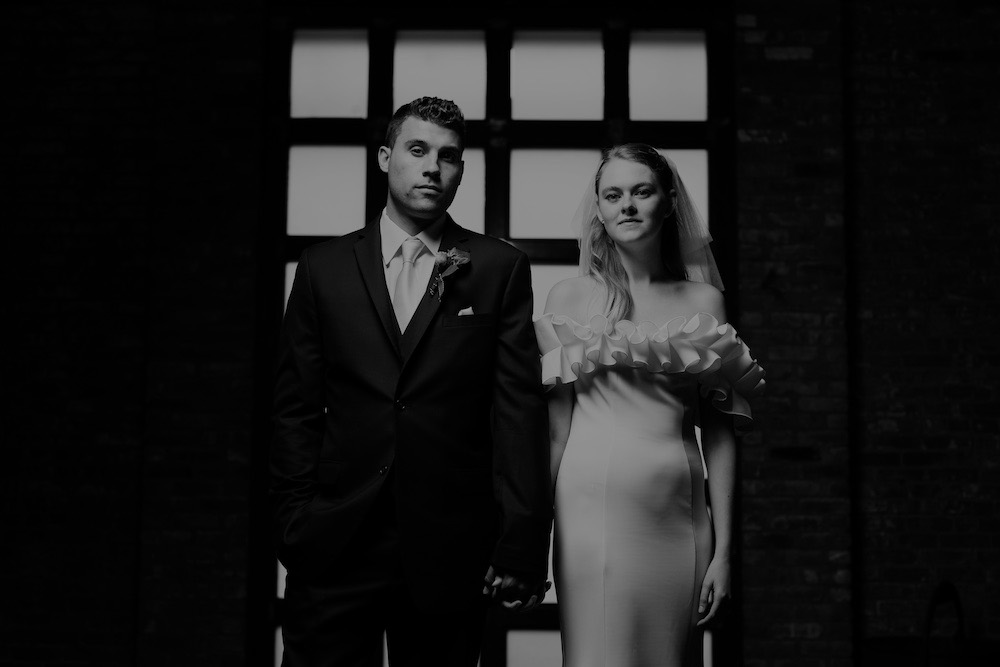The Flashpoint Xplor 300 Pro strobe marked a big change in the Flashpoint R2 series. Prior to the Xplor 300 Pro, everything in the series was Bowens mount, or designed to fit in an S-bracket. This also allowed connection to Bowens mount light shapers. The 300 Pro, instead, features the Godox mount, which is significantly smaller than the Bowens mount while still providing a secure connection.
Godox Mount
The Godox mount has made an appearance before on the Xplor 400 Pro. Although, most users simply attached the included Bowens mount adapter. The Xplor 300 Pro is the first light to really embrace the smaller mount, launching dedicated softboxes to take advantage of the reduced size. This includes the Glow 85cm softbox, Glow 65cm softbox, and Glow 60cm softbox.
Since the release of the Xplor 300 Pro, it has replaced my use of the eVolv 200 Pro. This is impressive considering — to this day — I think the eVolv 200 Pro is the best flash product on the market.
What Makes the Xplor 300 Pro Special?
In order to understand why I use the Xplor 300 Pro daily, and why I use it over the 200 Pro, you have to understand the type of work I do as a photographer. I spend more than 80 percent of my time photographing individuals at various locations.
My primary client is a university where I photograph students, staff, and faculty for editorial and marketing purposes. Our sessions are always short, as we are working with busy professionals with limited free time.
Here’s a sample of the 85cm softbox on the Xplor 300 Pro. This is also a great example of how ambient light sources of different Kelvin temperatures can affect an image.

I am constantly in classrooms, labs, foyers, hallways, staircases and the like. I love a good six-foot light source, but they are simply too much of a chore to use regularly in these tight environments.
Also, I am usually bouncing from one area to the next. Sometimes that’s hopping from a classroom to the hallway. Other times it means traveling to the opposite side of campus to the 4th floor of a building. This requires me to quickly tear down, put lighting away, carry it across campus, and set it all up again as quickly as possible.

This is where the Xplor 300 Pro shines so brightly. I keep the 85cm softbox attached directly to the Xplor 300 pro. The 300 Pro stays attached to my ten-foot light stand. Paired with my Xplor 100 Pros as accent lights, I can get a three-light setup out of a bag and ready to fire in less than 30 seconds. I can feel your suspicion as I type this, so here’s proof.
Perfect Power
If I strictly photographed people indoors, I could probably get by with just speedlights. But, I still spend enough time outdoors to require a flash that can balance with bright blue skies or sunlight hitting a shoulder.
For photographing individuals, the Xplor 300 Pro provides just enough output to satisfy this requirement. And it can accomplish this feat even when using High Speed Sync. The above sample is captured at 1/1600s.

Can I Still Use Bowens?
My studio is filled with over 50 Bowens modifiers. It would be a shame if I couldn’t use any of them on my Xplor 300 Pro. Thankfully, that’s not an issue. When the 300 Pro was released, a new S2 Bracket was released alongside it.
This allows you to connect the Xplor 300 Pro to any Bowens mount modifier. It also conveniently works with previous lights such as the eVolv 200, 400 Pro, and speedlights. This is the best of both worlds, in my opinion, as it allows you to use a tiny softbox when portability is king, but still use your existing collection of Bowens light modifiers.

Who Else Would Love the Xplor 300 Pro?
Chances are you don’t spend most of your time photographing students and faculty, as it’s a rather rare position these days. I think there are still multiple areas of photography that would appreciate the power and ability of the Xplor 300 Pro.
Wedding photographers who light couples with a softbox should find it to be a manageable modifier that still brings enough power for couples portraits. Senior photographers, headshot photographers, and anyone who photographs individuals and pairs should give this combo a serious look.
Article and Photos by Robert Hall

